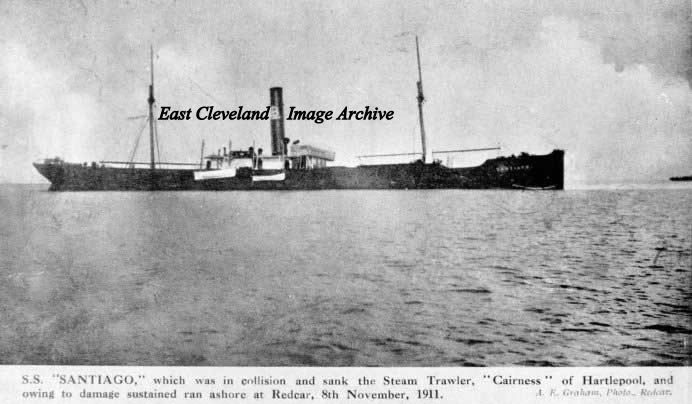
S.S. Santiago, in collision with and sank the steam trawler Cairness of Hartlepool. Santiago was damaged and she ran ashore at Redcar 8th November 1911. An A. F. Graham. Redcar postcard.
Image courtesy of Mike Holliday.
|
|
||
 S.S. Santiago, in collision with and sank the steam trawler Cairness of Hartlepool. Santiago was damaged and she ran ashore at Redcar 8th November 1911. An A. F. Graham. Redcar postcard. Image courtesy of Mike Holliday. 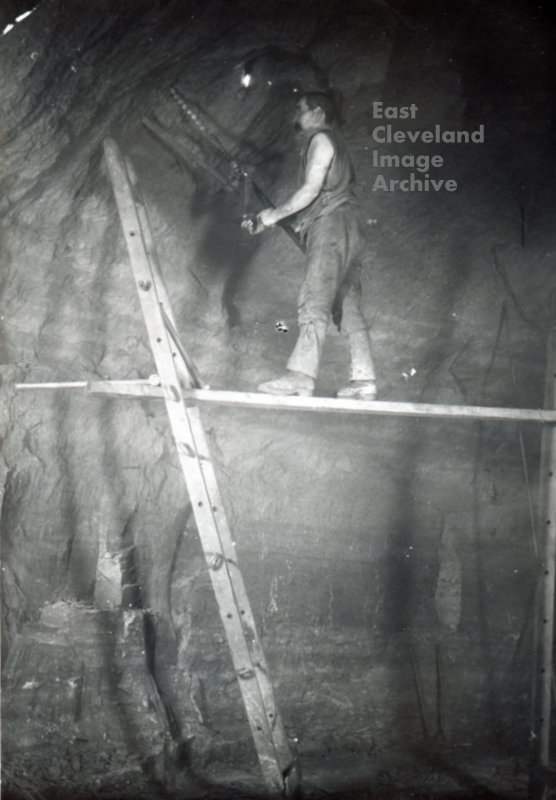 A miner can be seen drilllng a hole for the charges. He is using a hand ratchet drill, the improvised platform he is standing on looks perilously shaky. David Richardson tells us: ”Image from Eston Mine, a miner drilling a shot hole in the thick seam district (with an average height of 16ft) using a hand rotary drill (likely a Blackett Hutton). Taken around 1925.” Craig Hornby now confirms the date and the reason for the image with: ”Eston 1920 for ‘Iron & Steel Trades Review’”. Image courtesy of George Pearson; thanks to David Richardson and Craig Hornby for the updates. 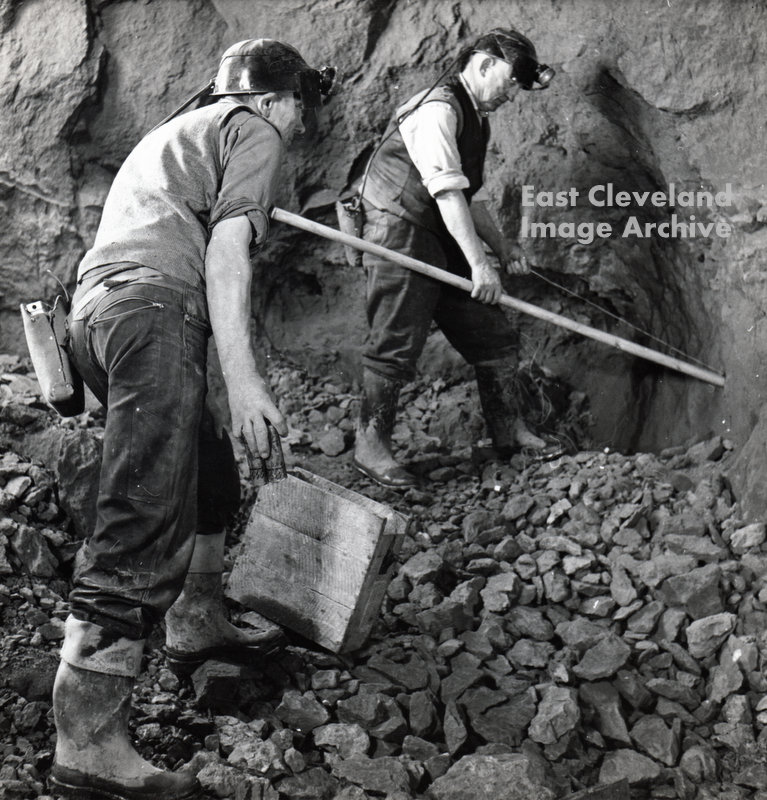 After a hole has been drilled a shotfirer is seen charging the hole with an explosive from the wooden case the second miner is holding. The miners are wearing safety helmets, with headlamp fed from the battery pack on their hips; David Richardson advises: “The scene was from North Skelton mine in the 1950s.” Image courtesy of George Pearson and many thanks to David Richardson for the update on location. 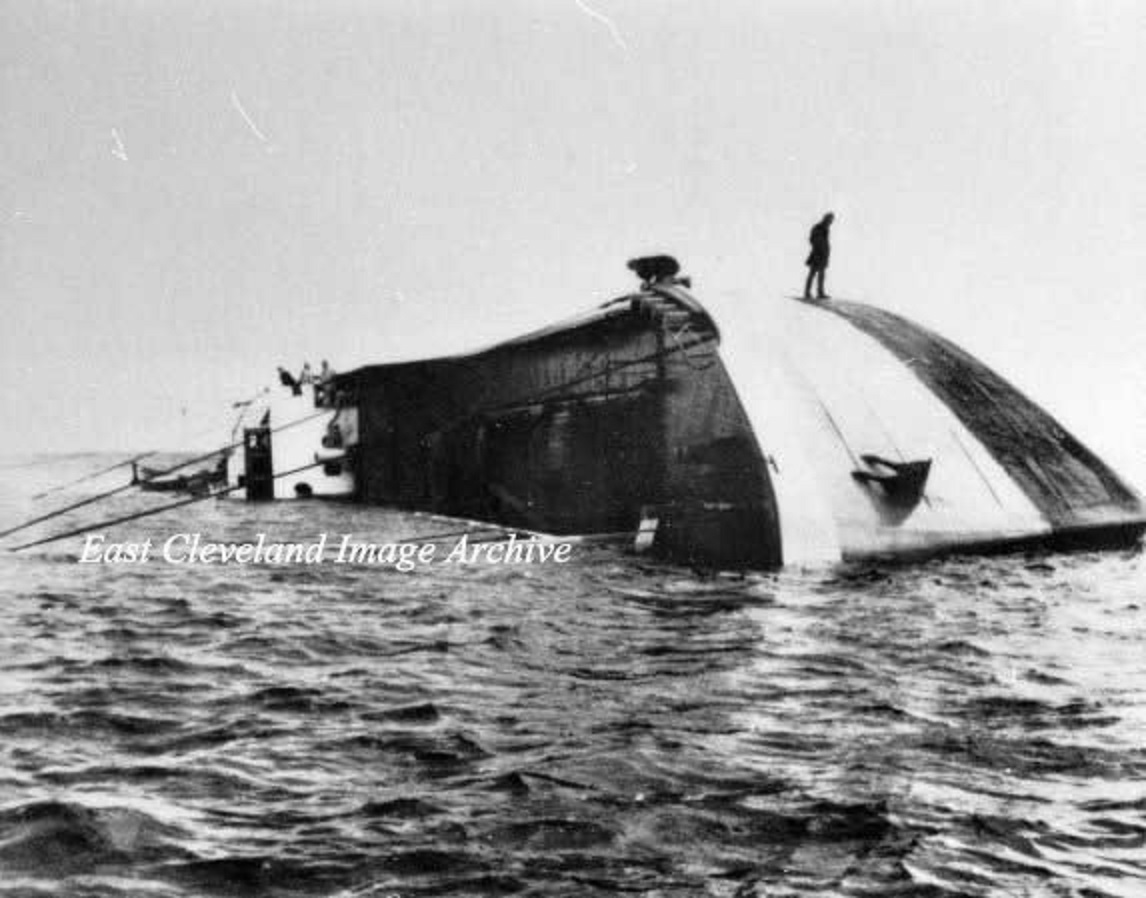 A Dutch registered vessel of 499 tons Hendrika was on passage from Bayonne to Aberdeen with a cargo of maize. She stranded on Salt Scar rocks Redcar on 4th May 1973 and became a total loss. Information from ”Shipwrecks of North East Coast” by Ron Young. Fred Brunskill tells us: ”Full of grain and bound for Aberdeen she came ashore with very little warning. Although crew were able to get off, the Sir James Knott lifeboat( now at Kirkleatham Museum ) and the inshore inflatable lifeboat were both in attendance.” Pete Dale has told the Archive: “I was heading to work in Redcar from Upleatham that evening when noticed this coaster heading along at a great rate of knots in bright sunlight but too close-in, for my liking. On getting to work I found a high point to find the Hendrika ashore on the Salt Scar. I remember someone trying to salvage the vessel after she rolled over, by placing two old (I assume) petrol tanks into the hold, but this failed. Some time later the propeller was found behind Welford’s Garage, located off Fisherman’s Square; between the garage and William Street.” Image courtesy of Mike Holliday and thanks to Fred Brunskill and Pete Dale for the updates. 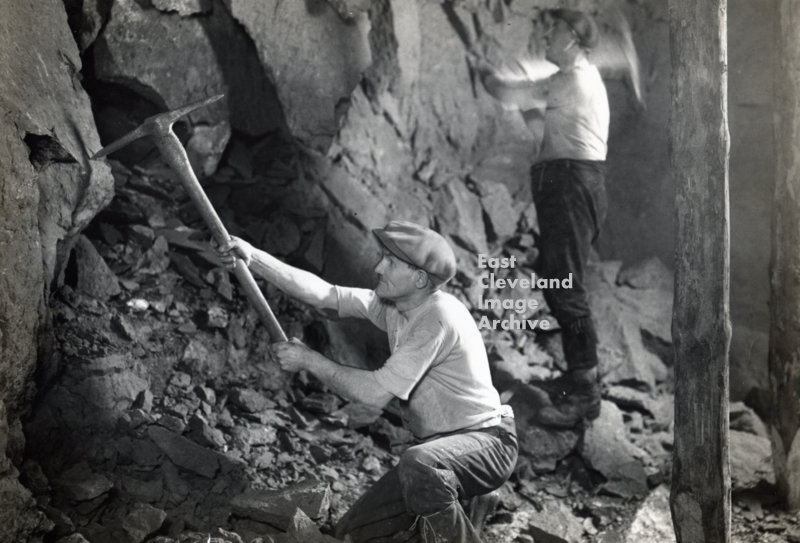 Two miners at the face in a Cleveland mine. The lack of safety helmets suggests an early date for the photograph. The sharpened points of the pit props were a safety feature. When the points began to spread the pressure was increasing and remedial action needed to be taken. Image courtesy of George Pearson. 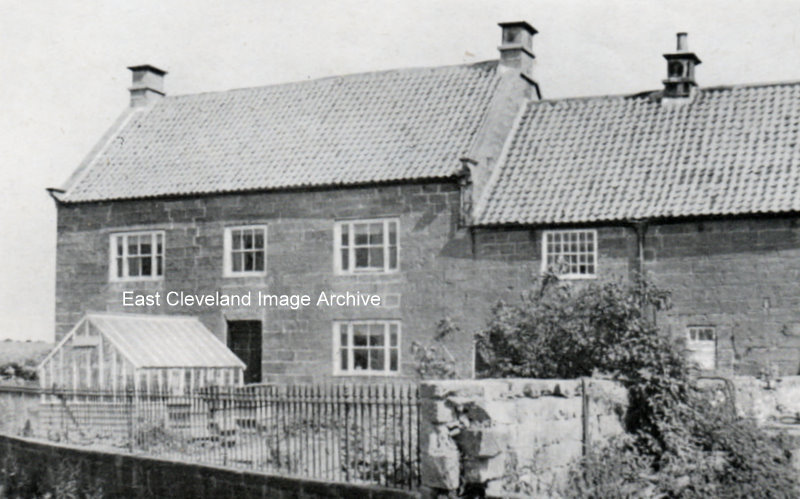 Or Red House Farm, 150 acres situated at the side of Whitby Road quite close to Staithes at the junction of Cowbar Lane. Described as having 5 bedrooms, 2 attics, bathroom, 2 sitting rooms, kitchen with range, scullery with sink, pantry, wash house with copper. Water from the three crosses well supply. Rent on Ladyday tenancy £137-13s-0p per annum. Estate makes an allowance off the rent of this farm for aerial standards (at one time used by Boulby Mine) which crossed the land. Not all the mod. cons of today, but all you would expect in 1946 when this farm was for sale in the dispersal sale catalogue for the Grinkle estate. Image courtesy of Mrs Lilian Waton. 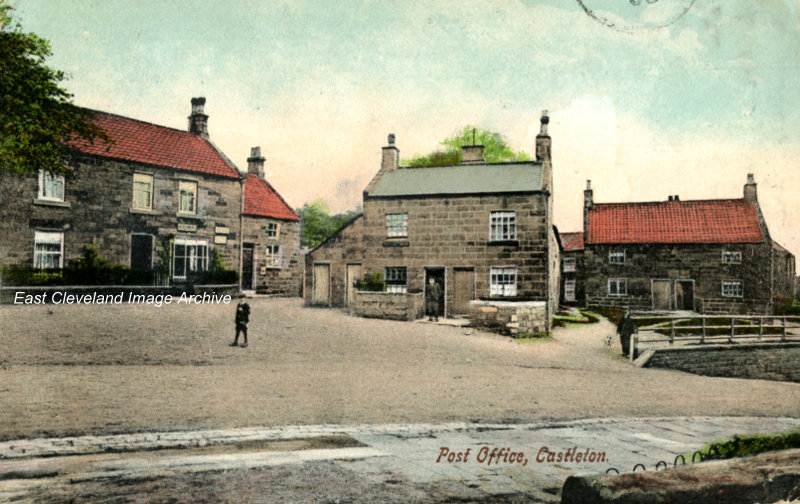 A tinted postcard, of the Post Office in the village of Castleton in the Esk valley, early in the 1900’s. Image courtesy of Tina Dowey. 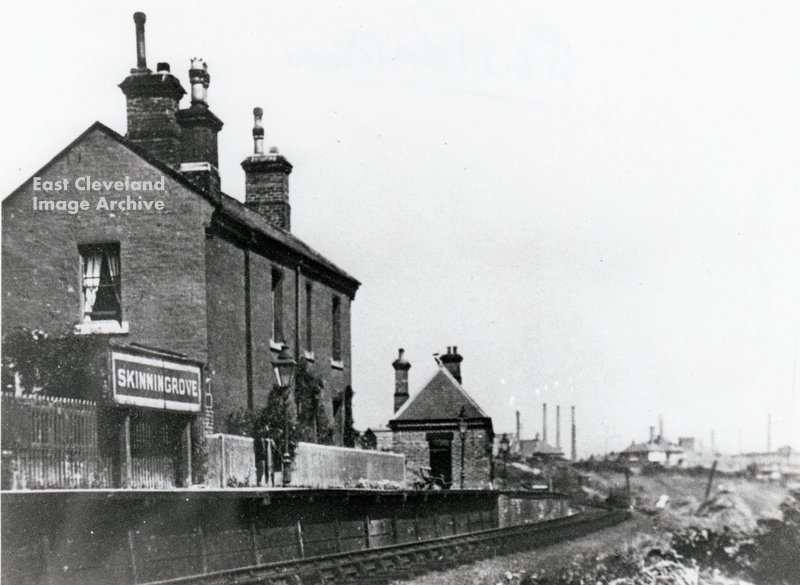 Skinningrove Station, on Carlin How Bank; it was closer to Carlin How, seperated by the famous zig zag rail descent into Skinningrove village. A one platform station, it suffered badly from mining subsidence and had to be demolished. Image courtesy of George Pearson. 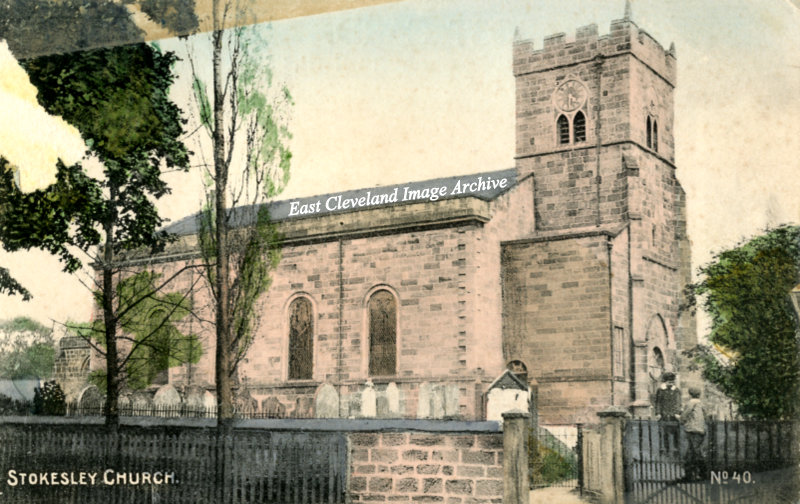 The Church of St Peter and St Paul, Stokesley; as it appeared in about 1900. The tower and chancel are of perpendicular era and the nave was rebuilt in 1771, note the two boys climbing the railings round the churchyard. Postcard courtesy of Tina Dowey. 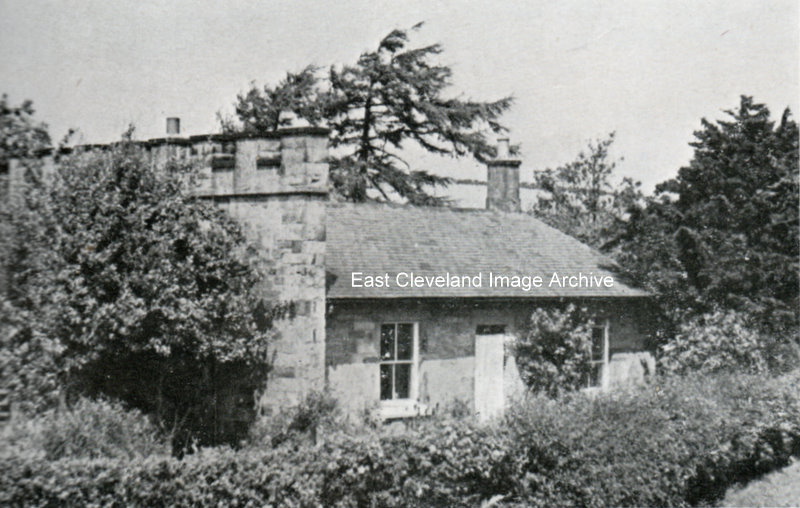 Or Angel Cottage, lot 62 in the catalogue. Described in the sale catalogue as having one double and one single bedroom, kitchen with range and cupboard, back kitchen with sink and cupboard, pantry, coal shed etc. Water from spring in woodland at rear. Built of stone with slate roof, the south wall is of great thickness and has a castellated parapet giving the appearance of 8 chimney’s. Rent was £13 per annum. The image was taken from Grinkle Park Estate sale in 1946. Image from the catalogue courtesy of Mrs Lilian Waton. |
||
Recent Comments